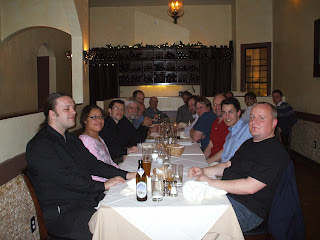Something that's really useful is syntax checking. It can save a lot of time (not to mention frustration) if you can find errors *before* you run your scripts. The Syntastic plugin for vim can be used for this. As far as I can tell, it doesn't do any syntax checking itself, but rather is the glue that links other syntax checkers to vim.
First things first, to simplify matters (*), let's rename _gvimrc to .vimrc (easier to use the commandline for this).
Next let's install Syntastic:
1. Create the folder "vimfiles" in your home directory if not already present, e.g. C:\Users\Noel\vimfiles
2. If you don't already have it, you need to install the Pathogen plugin (this plugin makes it easy to install other plugins):
a. Download the
zip
b. Extract the zip into vimfiles (thus creating vimfiles/autoload/pathogen.vim)
c. Create a directory called bundle in vimfiles (this is where to put plugins managed by Pathogen)
d. Add "call pathogen#infect()" near the start of your .vimrc
3. Install Syntastic as described on its
website:
a. cd C:\Users\Noel\vimfiles\bundle
b. git clone https://github.com/scrooloose/syntastic.git
c. Test by opening a file in gvim, and checking for error messages after typing ":Helptags"
Next, let's say we want to add some syntax checkers for Python. Your choices are pyflakes, pylint, flakes8 and Python itself. It's not either/or - you can include as many as you want. Note that flakes8 is a combination of pyflakes, pep8 (PEP8 style checker), and McCabe (cyclomatic complexity checker). I'm not so keen on style checkers and so I'm going to go just with pyflakes and Python.
1. If you don't have pip (the Python package manager), then
install it
2. Install pyflakes with pip ("C:\Python27\Scripts\pip.exe install --upgrade pyflakes")
3. Add C:\Python27\Scripts to the front of your Windows PATH if not already present
3. Configure Syntastic by adding the following to .vimrc:
let g:syntastic_python_checkers = ['pyflakes', 'python']
let g:syntastic_auto_loc_list = 1
4. Open a Python file and check that pyflakes and python are listed when you type ":SyntasticInfo"
The screenshot at the top of the post shows the plugin in action. It's triggered every time you save a file.
* This is necessary because the call to pathogen#infect() is ignored if in _gvimrc (I don't know why). If instead we used _vimrc, then the _vimrc installed in C:\Program Files (x86)\_vimrc is ignored (and we miss CTRL+C/V behaviour for example). This leaves us with .vimrc.




